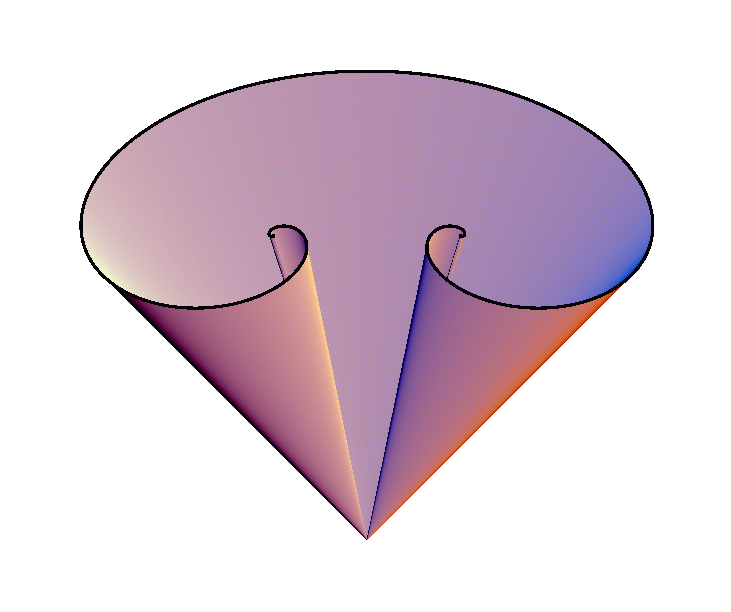

|
Sfb 288 Differential Geometry and Quantum Physics |
 Harmonic Reciprocal Mean Curvature Surfaces
Harmonic Reciprocal Mean Curvature Surfaces
 which are theta-isothermic
which are theta-isothermic
What is "theta-isothermic"? As one can define isothermic just by viewing on the functions of the fundamental forms - the Hopf differential is real with respect to a proper conformal coordinate - we define a surface to be theta-isothermic if the imaginary part of the Hopf differential is constant (theta) with respect to a proper conformal coordinate. However, neither is theta an invariant of the surface nor is the constant of the imaginary part of the Hopf differential a geomertrical property that is really understood up to now.
On the other side - even this is very new and not yet understood - for these "generalization" of isothermic surfaces there exist an involution, that maps a theta-isothermic surface (up to a scaling of the ambiente space) into an isothermic surface in either S3 or H3 and vice versa.
In the set of these surfaces there are self-dual surfaces. All of them are applicable. Once a surface in a space form with non-vanishing sectional curvature would be self-dual, it must be an isothermic surface in the Euclidean space, too. Thus all theta-isothermic self-dual HRMC surfaces are Bonnet-surfaces in the Euclidean space.
A theta-isothermic surface of type B
A theta-isothermic surface of type CIn the new class of surfaces, the reciprocal of the mean curvature is a harmonic function on the surface, all theta-isothermic surfaces are classified. They are dual to isothermic surfaces in the Euclidean space or in S3 or H3.
The action of the associated family is given by scaling plus a reparametrization. Thus all surfaces in each family are up to a scaling of the ambiente space the same. Only some limits (exceptional values of the family parameter) might give a different surface.

Three self-dual HRMC surfaces
 Author: Alexander Bobenko, Ulrich Eitner
Author: Alexander Bobenko, Ulrich Eitner